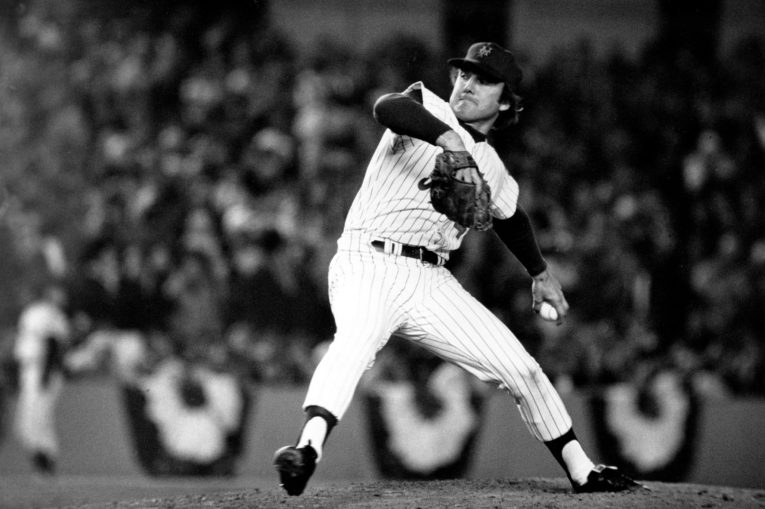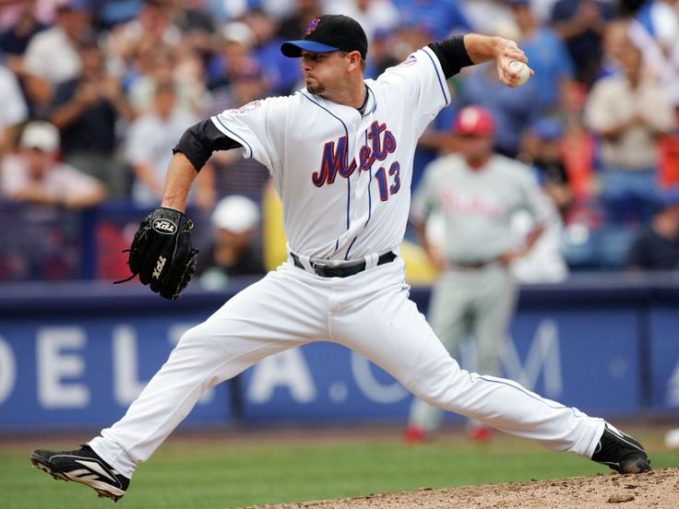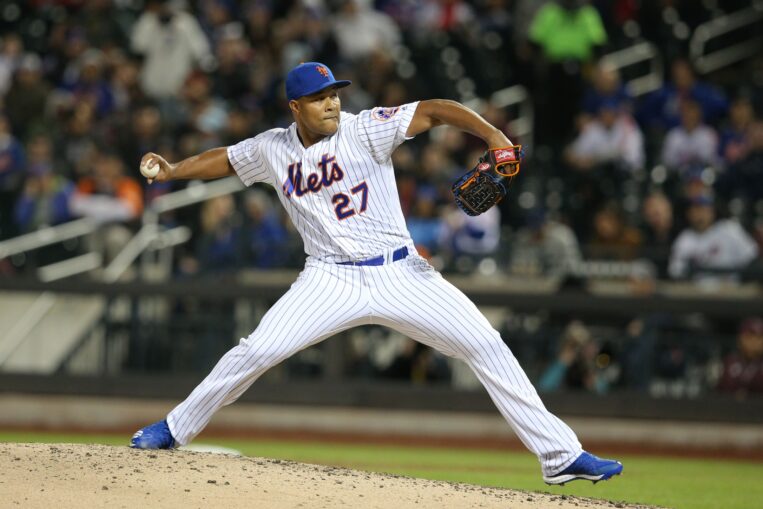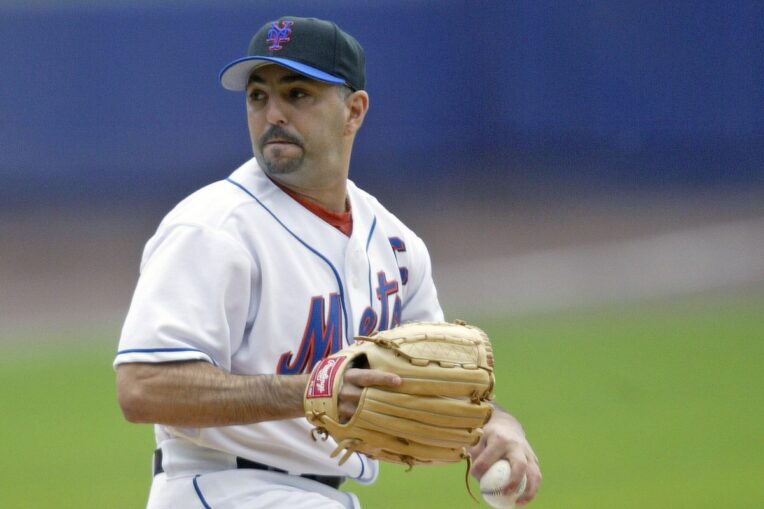
Since their inception in 1962, the New York Mets have become a franchise known largely for great pitching, timely hitting and solid defense. But of those three attributes needed for success, none has been more important to Mets fortunes than pitching, both starting and relief. The Mets two World Championships, five pennants and six NL East titles were mostly a function of the men on the mound and that distinction of dominant pitching carries through even to today.
In seven of the Mets 58 seasons of existence, the Cy Young winner was a Met. Four of the six Rookies-of-the Year Awards Mets players have earned have been pitchers. Two of the Sporting News Reliever of the Year awardees have been Mets. In 29 of their campaigns, the Mets have sent a pitcher to the All-Star Game, by far the most frequent position represented. Heck, even Matt Harvey won an NL Comeback Player of the Year award in 2015.
Point is, for a good part of their being, the Mets have been blessed with top notch pitching, both starting and relief. But when a Tom Seaver, a Dwight Gooden or more recently a Jacob deGrom have put on the orange and blue as starters, it is sometimes harder to recall that relief pitchers have been major contributors to the Mets success. Many lists exist of the top relievers in Mets history, most topped by John Franco and Tug McGraw. But who are the relievers that had one (or more) of the top five seasons a Met bullpen arm has ever had?
We continue our “Five Best” series with relief pitchers and the list may surprise some, both who’s on the list, and those who are not. Some of the more popular and well known relievers (like Roger McDowell) had solid careers with New York but never that one stand-out season needed to be included here.
5. Tug McGraw – 1972
Hard to leave him out, Edwin (Tug) McGraw, Jr. was the heart of the Mets for much of the decade he was in New York. Yet, the year 1972, not 1973 was chosen as a better statistical year for McGraw even though his “Ya Gotta Believe” mantra in 1973 will ring a pleasant tone in Mets’ fans ears forever. His clubhouse contribution can not be forgotten in 1973 as well, but when a reliever has a season with a minuscule 1.70 ERA and a 4.3 WAR (versus just a .70 in 1973) one takes notice.
Overall in 1972, Tug went 8-6, tied his career best with that 1.70 ERA and set a career high with 27 saves. He made his first trip to the All-Star game that year as well. McGraw was the winning pitcher in the Mid-Summer Classic as the NL rallied to win. He only allowed 71 hits in 106 IP in 1972 and set a club record for saves in a season that lasted until 1984. He even received MVP consideration in ’72.
Interestingly, McGraw was selected to the All-Star game only once as a Met despite having some excellent first-halves as an Amazin’. His second and only other appearance in the game was as a member of the Philadelphia Phillies in 1975, the year after the Mets traded him.
McGraw finished his career with a 96-92 record, a 3.14 ERA and 180 saves. As a Met, he was 47-55 with a 3.17 ERA and 85 saves through nine seasons.
In 1993, McGraw was inducted into the Mets Hall of Fame.
Tug McGraw left us far too early, succumbing to brain cancer in 2004 at the age of 59. A year earlier he helped establish the Tug McGraw foundation to help children and adults with brain tumors and later included mental health treatment as well. The Foundation has gone national and it is mentioned here to remind everyone the type of man this Met stalwart was.
4. Jesse Orosco – 1983
The Jerry Koosman trade to the Minnesota Twins in 1979 initially left a bad taste in most Mets’ fans mouths. In return, New York received an unknown California draftee named Jesse Orosco. The then 21 year-old made his Mets debut on April 5, 1979. What followed was a 24-year career with ten different teams, 1252 total games played (a major league record), two World Series Championships and two visits to the All-Star game.
For the Mets, he is fourth all-time in saves with 107, third all-time in fewest runs allowed with a 2.73 ERA and also third with a 133 ERA+. He had several very good years for the Amazins’ mostly in the early and mid-eighties. 1983 was a particular strong year for Orosco as he went 13-7 with a tiny 1.47 ERA, 17 saves and a career high 3.8 WAR.
Orosco made his first All-Star appearance in ’83 and was third in Cy Young voting. He received MVP consideration as well. A Met oddity also occurred in 1983, as Jesse Orosco became only the third Mets pitcher in history to win both games of a double header. The others are Craig Anderson in 1962 and Willard Hubbard in 1964. The twin bill was on July 31 against the Pittsburgh Pirates, with the Mets winning both games in walk-off fashion.
The next year was Orosco’s last as the principal closer as in 1985 he shared that duty with a young righty named Roger McDowell. Of course, Orosco’s playoff performance in 1986 is legendary as he was on the mound for the final out in both the NLCS and the World Series. His joyous celebration on the mound immediately following the last out is one of the most famous images in Mets history, and has helped cement his legacy as one of the greatest closers they’ve ever had.

3. Billy Wagner – 2006
In his first year as a Met, Billy Wagner quickly showed his worth to his new teammates. Acquired after the 2005 season via free agency, Wagner’s 2006 campaign ranks among the best a Mets pitcher as ever had. After spending nine seasons with Houston and two with Philadelphia, Wagner came to the Mets as an accomplished reliever and his 2006 stats did nothing to hurt that reputation.
Wagner actually started his pitching life as a right hander but multiple injuries to his right arm forced him to learn to throw from the left side.
As a member of the Astros and Phillies, Wagner at times was dominant saving as many as 44 games (2003) and appearing in four All-Star games. For the Mets, he appeared in two more Mid-Summer Classics and in 2006, finished sixth in voting for the Cy Young Award. Although 2006 was sullied somewhat with a poor performance in the NLCS, it was still a dominant campaign and worthy of inclusion on this list.
Overall, Wagner went 3-2 with a 2.24 ERA and racked up 40 saves in ’06. He also struck out 94 batters in just 72.1 innings pitched. On July 3, Wagner picked up his 300th career save. Wagner pitched well in the NLDS that year by giving up just one run and collecting two saves in three appearances. However, Wagner did not pitch as well in the NLCS, and his ERA in that series was 16.88. His 40 saves was the second highest total in his career.
Billy Wagner’s contributions to baseball were meaningful. He is only one of six pitchers to record 400+ saves in his career (422) and his second among southpaws. Plus, of all pitchers with at least 800 innings pitched, Wagner’s 11.9 K/9 and 33.2% strikeout rate are both the highest in major league history. Opposing batters hit for only a .187 average against him, lowest in MLB history with 800+ innings pitched. Also he has lowest H/9 ratio in history with 800+ innings, allowing 5.99 hits per nine innings. In 2019, Wagner was inducted into the National College Hall of Fame.
2. John Franco – 1990
If Tug McGraw was the heart of the Mets, then John Franco was its soul. A leader in every capacity, Franco spent 14 seasons with the Mets, mostly as a closer and always as one of the team’s MVPs. Franco saved 30 or more games seven times in his career (he had 29 in two other years), led the NL in saves three times (1988, 1990, 1994) and received the Rolaids Relief Man of the Year award twice (1988, 1990). He was a four time All-Star, but only had one appearance as a Met, that in the 1990 season. That season will be included here as it was slightly better than his 1994 season and nearly identical to his 1997 campaign although all were wonderful (as were several others).
On December 6, 1989, at age 29, John Franco was traded to the Mets from the Cincinnati Reds for Randy Myers and Kip Gross. Already an accomplished closer with the Reds, Franco, a Brooklyn native, wasted little time showing off his skills to the hometown fans.
In 1990, Franco saved 33 games, setting a then new Mets record while posting a 5-3 record and a 2.53 ERA. He led the NL in saves for the second time in his career. The 33 save total lasted until 1997 when he managed 36 saves at age 36. The 1990 season began a decade where Franco averaged nearly 27 saves per year and a 2.81 ERA on teams that at times were not very good, making his marks all that more momentous.
Probably 2B on this list was Franco’s 1997 season when he went 5-3 (like he was in 1990), pitched to a 2.55 ERA (again about the same as in 1990) and broke his own team record with 38 saves. His lack of mid-season and post-season awards in 1997 made the 1990 season a razor thin choice in a career that could have filled this Top-5 list alone.
John Franco saved 424 games in his illustrious career, fifth most in MLB history and most ever for any lefty. He had two more saves than Billy Wagner. He became the Mets third captain in May 2001. On June 3, 2012, Franco was elected to the New York Mets Hall of Fame.
When New York sports fans think of ‘the captain’, most immediately turn to Derek Jeter and Mark Messier. Although John Franco did not reach the lofty heights of these two all-timers, his contributions to the Mets clubhouse and his leadership as the Mets player representative were crucial. He wore his “C” well and goes down as arguably the finest closer in Mets history.

1. Jeurys Familia – 2016
Certainly not the most popular of the five listed here, Jeurys Familia, nevertheless, gets the nod as the owner of the best season a relief pitcher has ever had in Mets history. Many who bit their fingernails to the cuticles when Familia came in, remember the nerve racking way Familia went about his business, often putting runners on base before locking down the save.
Coming off a 2015 season that was largely excellent, it is sadly remembered by the three blown saves Familia had against the Kansas City Royals in the World Series. Those trio of blown saves is a World Series record. So questions justifiably arose as to how Familia would respond. He responded quite well.
On June 24, 2016 , Familia broke a franchise record previously held by Armando Benitez by converting 25 consecutive save opportunities to open the season. The month before, on May 25, he set a franchise record by converting 32 consecutive save opportunities, breaking a tie with Billy Wagner. He did not blow his first save until July 27 against the St. Louis Cardinals. It was the first blown save in his last 53 attempts. It was the third longest consecutive save streak in MLB history.
Familia was also named on the 2016 All-Star team, the only time he’s been so honored in his career.
Overall, Familia went 3-4 with a 2.55 ERA. He saved 51 games and finished 67, leading MLB in both, setting the Mets club record for saves in the process. Unfortunately, the playoffs once again were unkind to Familia as he allowed a three-run home run to Conor Gillaspie in the top of the ninth in the Wild Card game against the San Francisco Giants. Those three runs were all the Giants needed as they defeated New York, 3-0.
Jeruys Familia’s role with the 2020 Mets is somewhat unclear. With the problems Edwin Diaz suffered in 2019 and with new bullpen acquisitions on board, it is unknown where Familia will fit in the coming season (if there is one). He portends to be ready and it will be interesting to see how he’s used going forward.
Familia currently ranks third on the Mets’ all-time save list with 123. 94 of these 123 saves happened during the 2015 and 2016 seasons. The 2016 campaign was excellent and his consecutive save streak may never be broken by another Met. He caused heart palpitations and more than a few gray hairs in his time as closer, but numbers don’t lie. His 2016 season was his finest and is more than deserving to top this list.
Honorable Mentions
Below are the names of those, not listed above, who had great seasons as a Mets reliever.
Ron Taylor – 1969
Skip Lockwood – 1976
Roger McDowell – 1986
Randy Myers – 1988
Armando Benitez – 2001
Francisco Rodriguez – 2009
And one final note: this series of Top 5 campaigns will conclude with starting pitchers. Even though most fans can name the individuals to be chosen by heart (and their stats), it promises to be a nice stroll down memory lane. The article will include some lesser known facts of certain Mets stars and will be a nice read to even the most knowledgeable of Mets’ fans. Please feel free to comment about either this piece on relief pitchers or the upcoming one on starters.
















